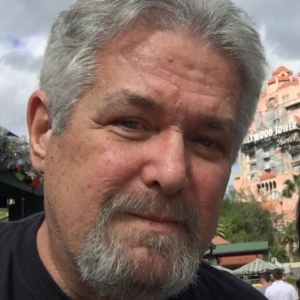Is the Preventative Maintenance Business Part of Your Business Plan?
Guest writer Bill Pyles writes this week’s blog post on preventative maintenance: is the preventative maintenance business part of your business plan?
I sure hope the answer is a resounding yes! The PM business adopted by OEM equipment dealers goes back to the 1980s and is a win-win for both dealers and contractors. A properly maintained machine, that’s documented, is worth more when the time comes to replace it.
I can still remember the day the subject of our dealer doing in the field PMs was brought to the table. I had a strong objection that contractors would not pay the dealer to do their PMs. PMs were perceived by many as a necessary evil not requiring a higher-level tech from a dealer. By the way, this type of thinking was also applied to undercarriage management; more on this in another blog.
Not taking the PM program seriously can lead to unplanned downtime and poor machine availability, which could be a perceived reflection of the equipment and the dealer. A machine model with poor availability will more than likely not be considered when replacement time comes.
PMs were something the contractor would take care of on the weekend or after hours. Unfortunately, too often, due to the demands of the job the machine was on would delay getting a PM completed on time. I have seen engines go 300 to 400 hours past due on a PM service. Unfortunately, the additional wear caused by the contaminated fluids and excessive hours cannot be put back into the engine. And if this trend continues, the engine is certain to fail at an earlier hour meter reading than expected. Times this scenario over the entire fleet and you’ll quickly realize that PMs are critical to your operation and machine availability. This applies to contractor’s and dealer’s rental fleets.
So how do we make sure your PM program is on track? The first thing you’ll need is a good PM scheduling tool. It will take some time to load all the equipment into a scheduling tool, but it’s time well spent. A good scheduling tool will keep track of the machine hours, create alerts, list the items to be serviced on each PM along with a parts list when a machine is coming due as well as keep maintenance history and oil sample reports in one convenient place. It will also interact with your telematics to keep hours current. A good place to start is to flag the machine when it’s within 40 hours of being due. This should provide ample time to schedule the PM due. I would also flag a machine over 40 hours due as a past-due PM for tracking purposes. Your goal should be 95% or higher for on-time PMs.
Next, you’ll need a dedicated PM vehicle. If you try to do PMs out of a service truck, hauling buckets of oil, you’ll have issues capturing the drain oils for proper disposal. The size of the truck will depend on the number of machines you’ll be servicing. Your vehicle could be a smaller truck with a lube skid. A lube skid works well in a rental operation with smaller machines, skid steers, small rollers, loader backhoes, etc.
If you have a medium fleet of small to larger equipment you may want to look at a dedicated PM truck. These trucks can be custom-made to provide you with adequate new fluids as well as waste oil tanks. Oil recovery systems that pick-up waste oil quickly and efficiently and metered oil reels to quickly refill lubricated compartments. Be generous with external lighting around the outside of the truck; required for doing PMs at night. Be sure to add an air compressor to blow out radiators and some air filters. Work with a reputable truck vendor for building a truck that will fit your needs. I’ve worked with a few truck vendors thru the years and the one I could always depend on was Nichols Fleet Equipment in Chattanooga Tennessee. Experience does count!
So now we have a scheduling tool and for the vehicle to do the PMs we’ll need to add the PM Tech. This person does not need to be your number one technician, nor should this person be right out of technical school. The PM tech needs to understand all the items that make up the various levels of PMs. A 500-hour PM is much more than changing the engine oil, and fuel filters and looking at the air filter, lots more! The tech needs to understand how to properly take an oil sample. I suggest taking all the oil samples at each service. Some suggest taking an oil sample only when the fluid is changed. I do not see much value in taking the first hydraulic oil sample at 5,000 hours. An incorrectly taken oil sample will result in erroneous results. Erroneous results lead to bad decision-making and could result in catastrophic downtime. Taking oil samples at the time of a PM service will create a history of the components of the machine that will show trends, good trends when the oil sample report comes back with no alerts, and bad trends, for example when sodium in the engine is trending upwards. Sodium in engine oil could be an indication of a small coolant leak into the engine. You can schedule the machine down, fix a minor problem and go back to work. Or you can ignore the sodium in the engine and have unplanned downtime, a possible engine failure event that usually happens on an important time-sensitive job. Be sure to have someone on staff that can interpret oil sample reports!
Most equipment OEMs market their brand of fluids. This presents a problem if you have a large mixed fleet. Substituting Cat Drive Train oil for hydraulic oil is not recommended. Mixing different types of hydraulic fluids can cause serious damage to the hydraulic system. Mixing different types of long-life coolants can cause problems. When setting up your PM vehicle be sure to review the correct fluids needed for your fleet. You do not need to use the OEM recommended fluids if the fluids you are using meet the OEM spec. I suggest using quality fluids and fuel to maximize your PM intervals. You will notice most OEM PM intervals are “recommended” intervals. If you have a machine working in a quarry, transfer station, or any other domiciled location, you can extend the PM interval if the oil samples indicate no issues. Remember, the oil does not wear out, rather the additives deplete causing the fluid to not perform as it should. A good oil sampling program keeps your fleet in good operating condition.
Your PM tech should do a walk-around inspection and a safety inspection during each PM interval. Therefore, the PM tech must be familiar with the machines he or she is servicing. The inspection form can be custom-made and part of your PM scheduler or work order system. The intent is to keep small problems small, document all machine issues and follow up with corrective action. If there is an issue that can wait till the next PM, it should be noted in the scheduling tool and pop up as a reminder at the next PM interval. Pictures are very helpful in documenting machine issues or damage. I recommend the PM tech also take pictures of the filters replaced during the PM service clearly showing the date and hours the new filter was installed. And while we are talking about filters, I do suggest using genuine OEM filters. Experience has shown me that many filters look the same on the outside but are a world different on the inside. Installing an aftermarket filter with the wrong micron rating will allow larger wear particles to pass through damaging critical components. OEM filters are specifically designed for your equipment!
The PM tech should also look at and document all machine fault codes. Then the codes should be cleared allowing the tech to determine if the fault codes are active or logged. Reacting to an insignificant code could prevent the machine from going down hard tomorrow. It may be a good time to do a forced regeneration to keep your diesel particulate filter operating normally.
Bottomline, be sure to put a person who is knowledgeable of your equipment, fluids and coolants, oil sampling and oil sample interpretation, and a repair before failure attitude in charge of your PM program. Set machine availability goals to measure the effectiveness of your PM program. Set on-time PM goals. Keep electronic records and make them available to a potential buyer of your used machine. This is especially important for a dealer’s rental fleet. It would send the wrong message if a potential buyer of a dealer’s rental equipment asks to see the PM history and oil samples and there are none or hit and miss.


